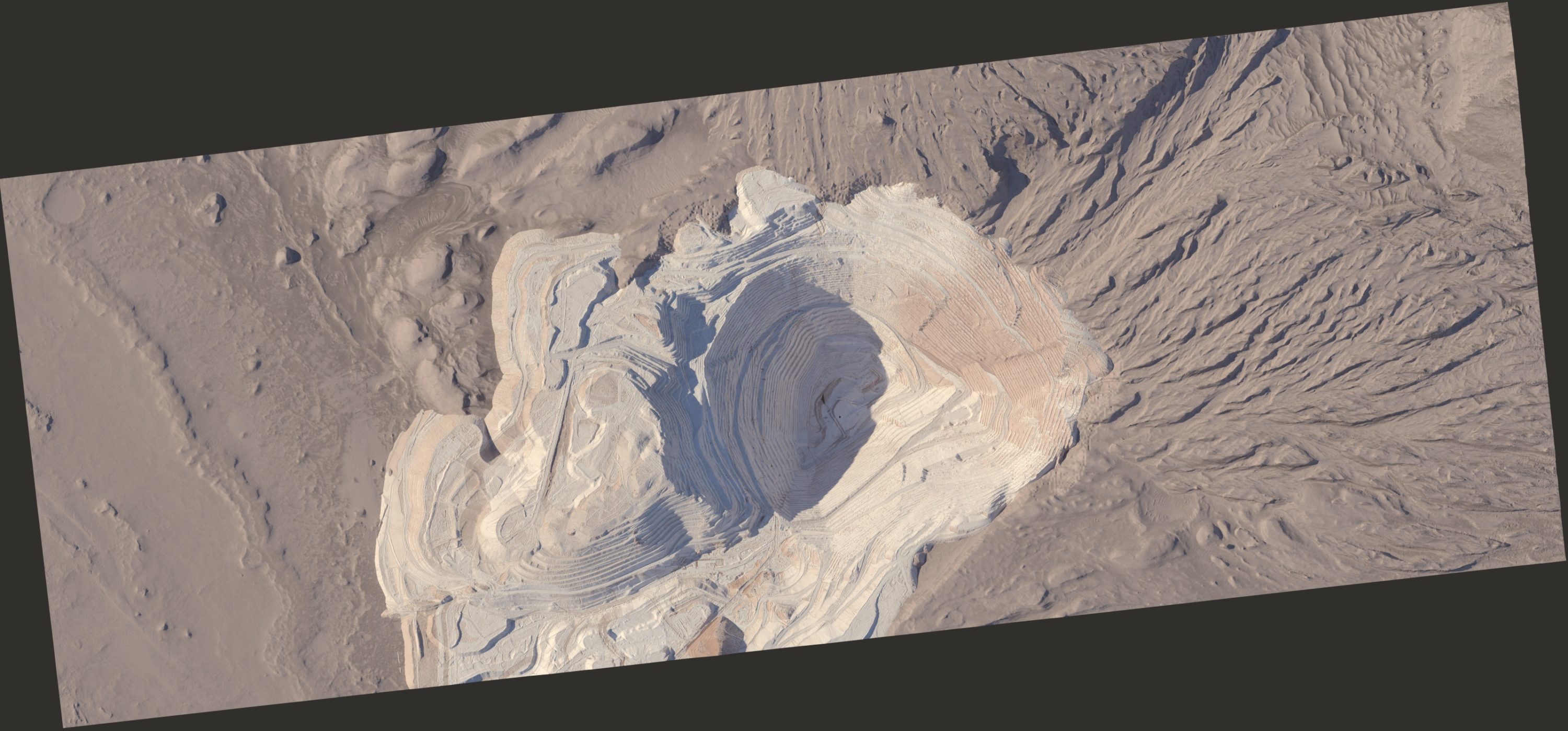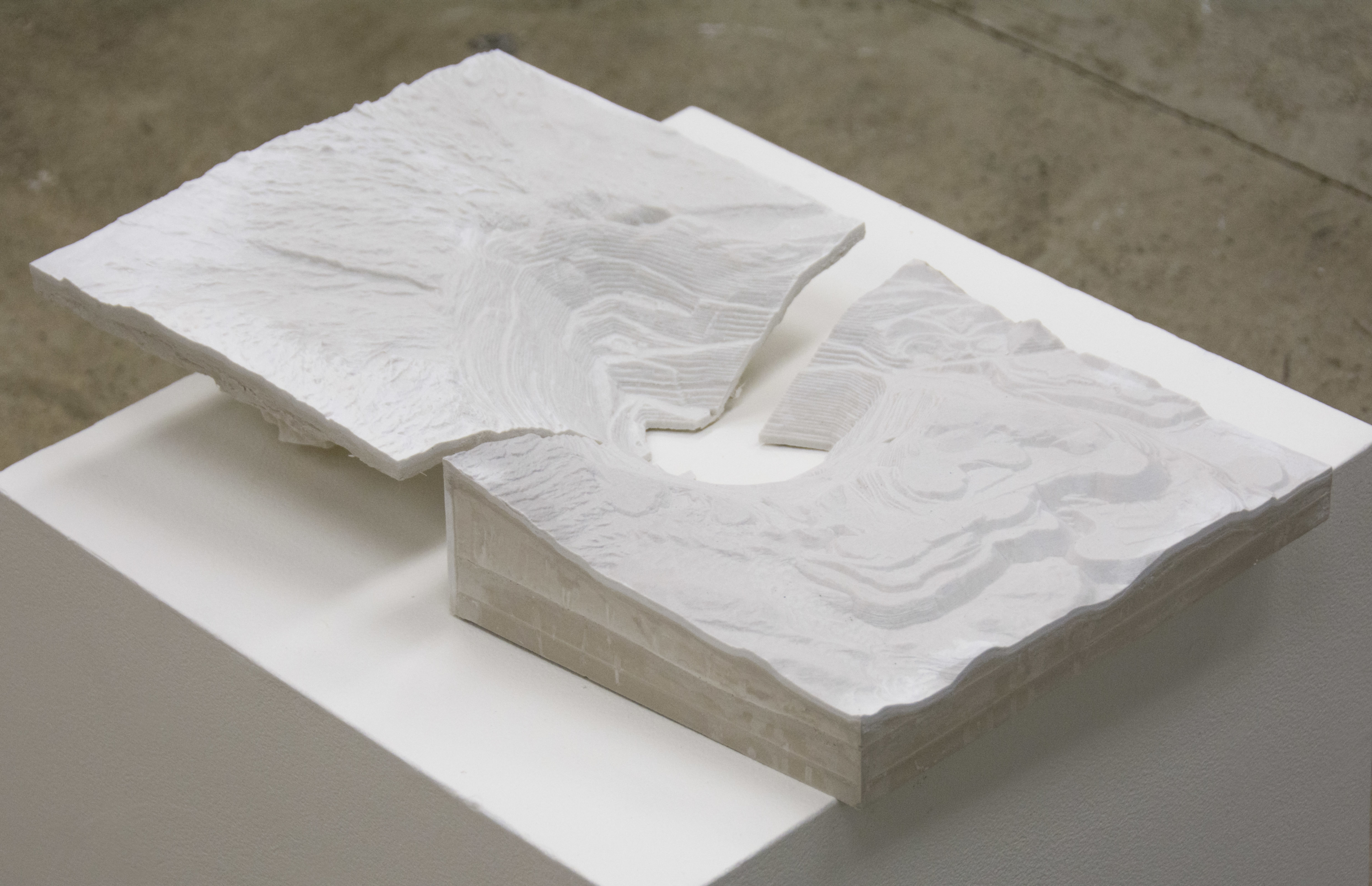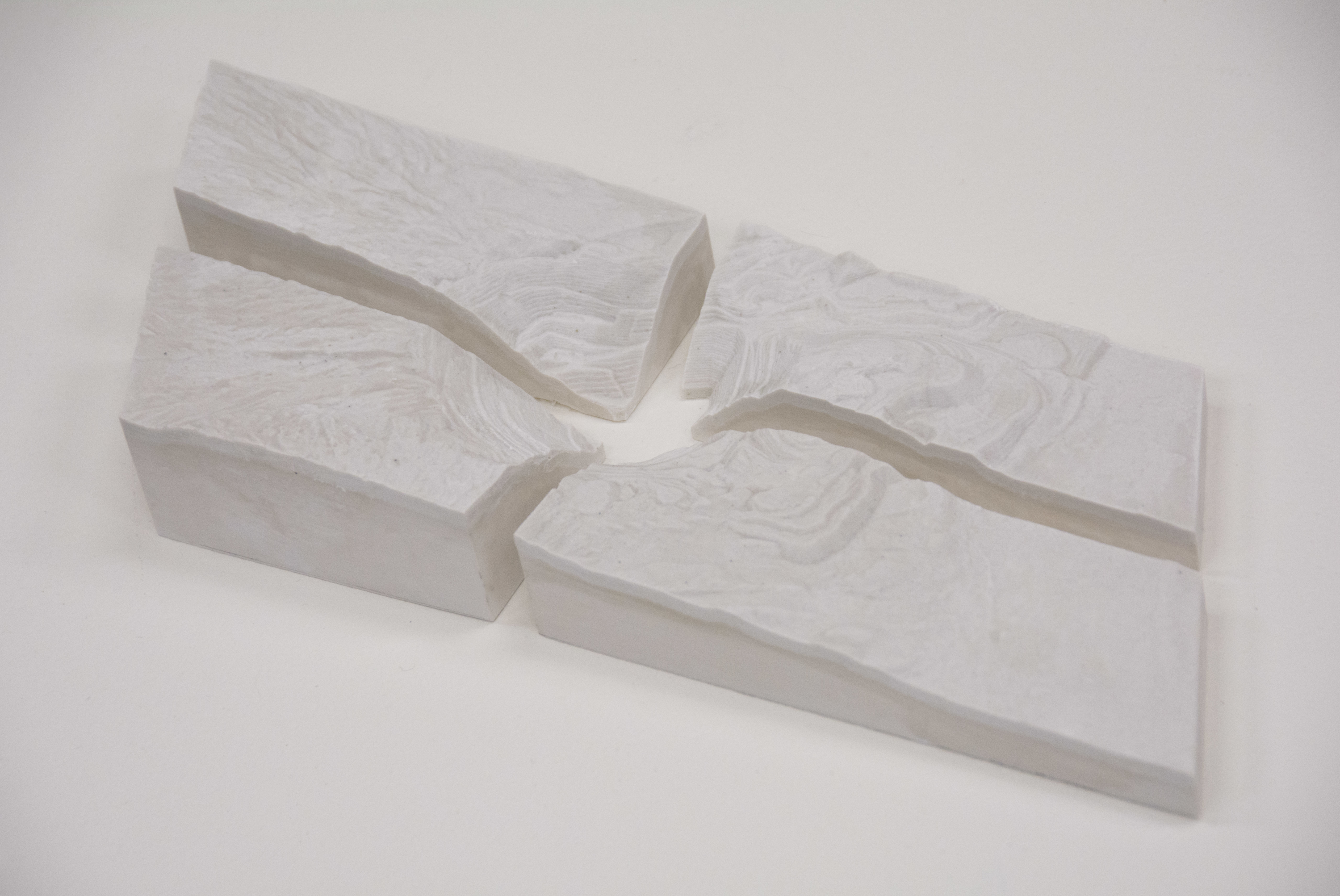Areo Gardens I, Attract
This series of animated short films depicts surreal and sublime natural geology in the solar system. Scans of natural rocks and boulders captured in many parts of the world using 3D photogrammetry are set above a Martian landscape captured by the NASA/JPL HiRise Imager. The stones depicted in Areo Gardens include boulders from Joshua Tree, California, an abandoned quarry in Syracuse NY and volcanic stone formations from the coast of Senegal.
Areo Gardens III, Wash
Areo Gardens V, Gale Crater
The landscape of this film is a speculative model combining a USGS LIDAR scan of Bingham Copper Mine, UT, with the terrain of Gale Crater, Mars, obtained from the MRO/HiRise satellite program. The depiction of this fictional setting helps us to consider the ramifications of anthropogenic change and radical alterations to landscapes beyond earth.
Gale Crater with Copper Mine
This speculative 3D model sites Bingham Copper Mine on the surface of Mars. The famed Utah copper mine is the largest open pit mine in the world, and the site of one of Robert Smithson’s proposed land interventions. The Martian site, Gale Crater, is currently being explored by the NASA Curiosity Rover. The work urges us to consider the ramifications of anthropogenic change and radical land alterations beyond Earth.


Kim Stanley Robinson, in his fictional Mars series, illustrates conflicting perspectives towards human intervention on uninhabited planets. The “Greens” in his story are those wishing to terraform Mars for human habitability while the “Reds” take the extreme standpoint that the planet should not be altered in any way. Ostensibly the Red position is scientific — to preserve the geological record for scientific inquiry. However his Red characters also posses an almost mystical impulse when they admit that they are willing to wage eco-terrorism, not for science, but for a profound reverence for the sublime awe to be found in nature, wherever in the solar system that may be found.
SpaceX’s Elon Musk dreams of a Martian city. He softens his intentions with vague optimism like “becoming a space-faring race is a lot more interesting” but the economic driver of his Martian colonization plan is resource extraction. What he is actually proposing is a mining colony. Industrial mining operations don’t tend to have such an altruistic track record on planet Earth. Typically they end with an enormous hole in the ground and a river of toxic by-products.
It is tempting to turn towards Robert Smithson’s strategy to reclaim the exposed terrain of mining operations as sites for radical land art. But perhaps this also implies a sort of defeatism, as if the forces of industrial capital are inevitable. Might it be even more radical to consider a future in which “art-washing” the destruction of nature is not necessary in the first place?
